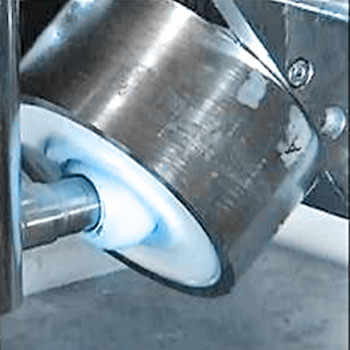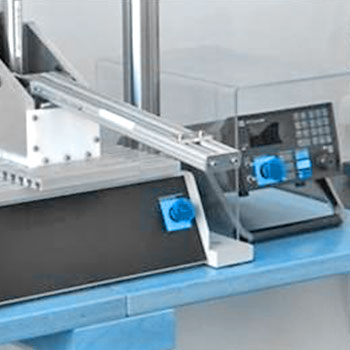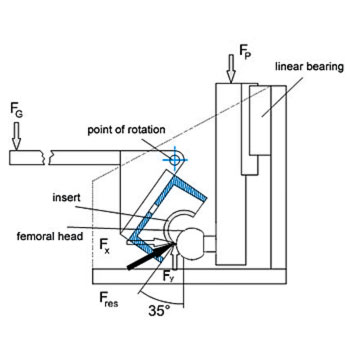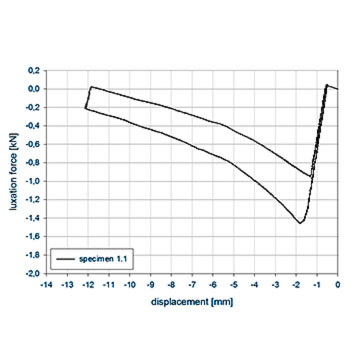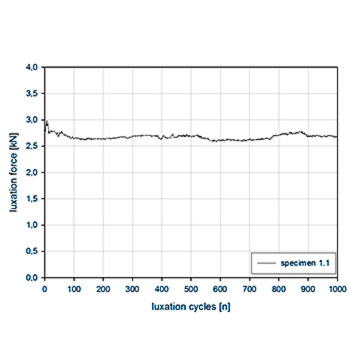Luxation test - PI-3
Normative References (internal)
PI-3: Luxationsversuch ohne Schaft-Pfanne Kontakt (akkreditiertes Verfahren)
Hip endoprostheses tends to luxate in a cranial direction. Some of the known factors enhancing luxation are known:
- A: cup inclination
- B: cup movement due to loosening
- C: accident
- D: insufficient refixation of the trochanter major
- E: bone contact
- F: release of capsule or muscle
- G: squeezed bone cement
- H: short neck / offset
Due to mechanical reasons, luxation only occurs if the resulting load R moves across the luxation point or impingement of cup and stem occurs. Luxation due to extensive release of muscle or capsule tension is not simulated in this test. Most cases of luxation have multiple causes as classified above. Aim of the tests performed by EndoLab® is to gain information about the resistance of a modular insert as well as about the resistance to abrasive wear (hard/hard couplings!). The luxation due to impingement and without impingement are simulated using two different test setups.
The procedure can be performed up to several thousand luxations/repositions using loads up to 3 kN.
